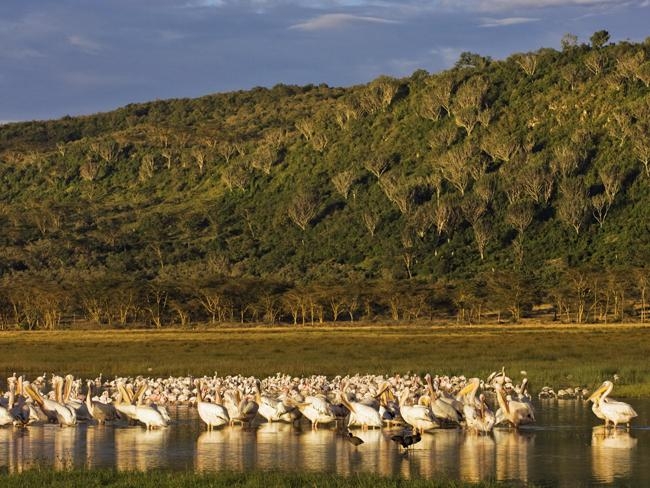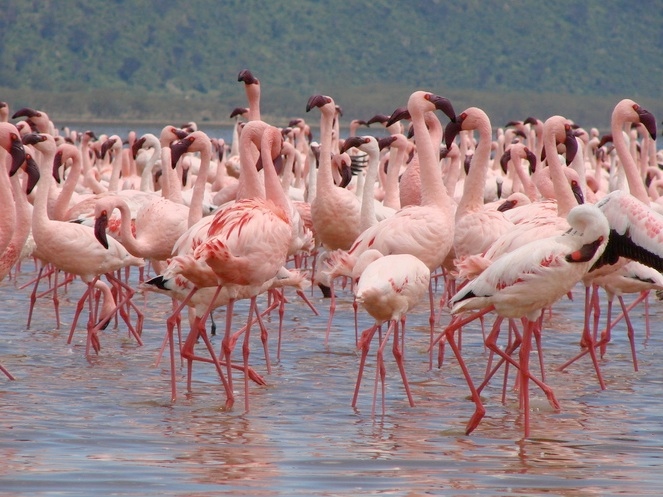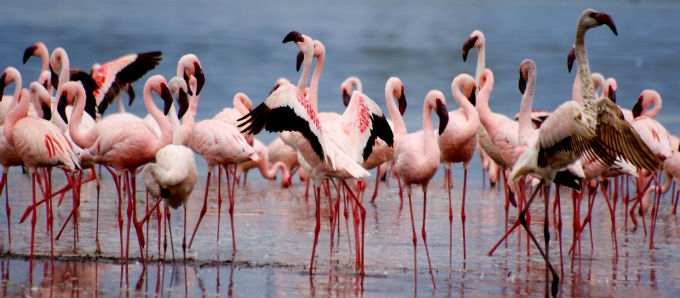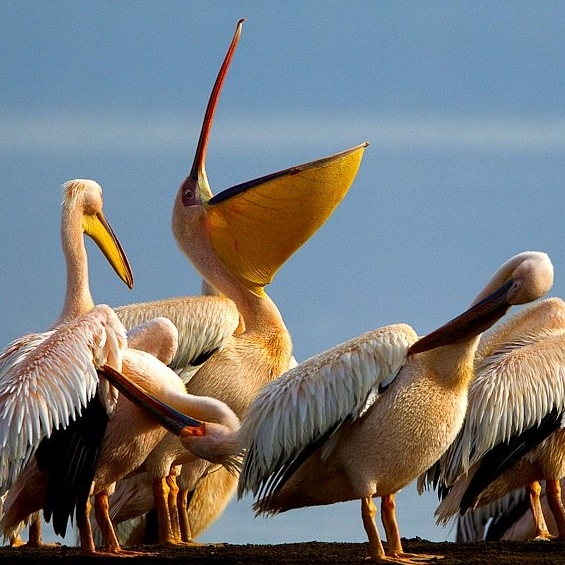Lake system in a large cracked valley - World natural heritage in Kenya
Unesco's Scientific, Educational and Cultural Organization recognized the Lake System in Kenya's large cracked valley as the World Natural Heritage in 2011.
The Great Rift Valley, named after the Great Rift Valley, was named by the English explorer John Walter Gregory in the late 19th century. The Great Rift Valley is actually an area with a long trough-shaped terrain. continuously reaching over 6000 km from northern Syria to the southwest of Asia and the center of Mozambique in East Africa. Today, scientists use the term " stretching boundary " to indicate a cracked area in East Africa, and geologists call this phenomenon Nubia and Somalia. Through that explanation it is possible to imagine this cracked valley created by the process of splitting Africa into two new arrays.

Lake system in the Great Rift Valley in Kenya.
This deep pool system extends more than 6000 km with an area of an impressive width from 35 km to 1000 km. There are 3 main areas divided into east, west and south. In the valley and the deep pool system there are countless large and small lakes and hot springs . Including 3 largest lakes: Lake Bogoria, Nakuara and Elementaita. Lake Bogoria covers an area of 10,700 ha; Lake Nakuru has the largest area of 18,800 hectares; Lake Elementaita has the smallest area of 2,534 ha. These three large lakes are also small lakes and streams in a large cracked valley that is home to and grow for countless species of algae, fish and hundreds of birds.



 The system of lakes in the large cracked valley is the habitat of hundreds of birds.Of which, 13 species are listed as rare and endangered.It is estimated that every year tens of thousands of birds migrate through this land .
The system of lakes in the large cracked valley is the habitat of hundreds of birds.Of which, 13 species are listed as rare and endangered.It is estimated that every year tens of thousands of birds migrate through this land .
Most of the lake system in the Great Rift Valley cracks are formed after volcanic eruptions, or towns that create dents on the ground. This has created a special geological layer with strata and extremely unique landscapes. Another impressive point is due to the diversity of algae living in lakes and swamps along with favorable climate and terrain, where there are hundreds of large and small birds looking to live and grow. Among hundreds of bird species, 13 species are listed as rare and endangered species such as white pelicans; Flamingoes; Long stork; Black-necked white storks . Besides hundreds of species of birds, many wild animals are also listed as rare and precious animals such as black rhinoceros; Giraffe; Lion; Jaguar; Hyenas; Zebra horse.
According to scientists, 20 million years ago, the crust was quite weak, after a seismic fracture from southwest Asia that ran as far as East Africa. On the African continent of that time, the crack broke through many countries from Ethiopia, Kenya, Tanzania to the lower Zambezi river in the Mozanbique valley. This crack has formed the rugged cliffs of cat ears in hundreds of kilometers, there are cliffs cliffing 2000 meters high, the lowest place also has a height of 600 meters above sea level.

 Not only birds, this heritage is also home to many other wildlife species.
Not only birds, this heritage is also home to many other wildlife species.
Great Rift Valley lake system in Great Rift Valley is recognized as a World Natural Heritage by criterion (vii), (ix), (x)
Criterion (vii): The lake system in the valley cracks not only the beautiful terrain and the beautiful natural landscape, but also has a special geological layer with a diverse lake system and groundwater Many hot springs have high mineral content. This is also a place with good ecological and natural environment, so there are hundreds of bird species that have chosen this place to reside and are a place to stop on the journey every year.
Criterion (ix): The lake system in the valley cracks is a testament to the development of natural ecosystems. Besides, it also provides information about the evolution and development of lake ecosystems and many wildlife species, hundreds of birds here.
Criterion (x): The lake system in the Great Rift Valley cracks is an important proof of the Earth's geological layer from 20 million years ago. The lake area is also the habitat of hundreds of species of birds and many wild animals. Besides, the ecosystem here also contributes to balancing the natural environment of the whole region.



 The special terrain of the valley cracks and the map illustrates a cracked road that runs thousands of kilometers across many territories of the Great Rilf Valley world.
The special terrain of the valley cracks and the map illustrates a cracked road that runs thousands of kilometers across many territories of the Great Rilf Valley world.
- Lake Turkana National Park - Kenya
- The world has 4 more natural heritages
- Mount Kenya National Park
- Whale Valley - World Natural Heritage in Egypt
- Uvs Nuur Basin - World natural heritage in Mongolia
- Orkhon Valley - World Cultural Heritage in Mongolia
- Survival war on Kenya grassland
- 12 unique natural heritage of the world
- Fortress of Jesus at Mombasa - Kenya's world cultural heritage
- The soil cracked an unprecedented giant split the African continent
- Sichuan Big Panda Reserve
- Kathmandu Valley - Nepal
 Suzhou classic bonsai garden - China
Suzhou classic bonsai garden - China Chau Nguyen Dynasty
Chau Nguyen Dynasty Thai Son Mountain - World Wonder
Thai Son Mountain - World Wonder Ancient villages of Shirakawa-go and Gokayama
Ancient villages of Shirakawa-go and Gokayama